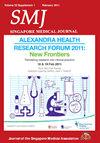进行和不进行电诊断研究的皮肌炎诊断分类:真实世界的临床实践
IF 1.7
4区 医学
Q2 MEDICINE, GENERAL & INTERNAL
引用次数: 0
摘要
欧洲抗风湿病联盟(EULAR)/美国风湿病学会(ACR)2017年修订标准和欧洲神经肌肉中心(ENMC)2018年标准提高了皮肌炎(DM)的诊断准确性。然而,肌电图(EMG)并未被纳入诊断标准。我们评估了两种标准下的肌电图在对皮疹伴或不伴肌无力的 DM 及其肌病亚型患者进行分类时的实用性。 在这项回顾性研究中,我们纳入了 20 名根据博汉和彼得(BP)标准以及肌肉和/或皮肤组织病理学检查结果被分为 DM 和其他诊断组的患者。然后,我们将其诊断准确性与 EULAR/ACR 和 ENMC 标准进行了比较。比例差异通过费雪精确检验来确定。 有两名患者的肌无力伴肌酸激酶升高,但肌肉活检却没有典型的DM特征,我们采用BP标准将其错误地排除在替代诊断之外。两例肌电图均显示近端和远端肌肉存在肌病性募集模式和自发活动,与临床表型一致。根据 EULAR/ACR 和 ENMC 标准,两名最终诊断为系统性红斑狼疮的患者被错误地归类为 DM,但肌电图并未显示肌肉炎症的证据。 肌电图在识别临床上有轻微肌无力的DM患者的轻微肌病方面很有价值,可以更好地对DM亚型进行分类。如果没有显示肌肉受累的肌电图体征,则可为其他诊断提供线索。此外,肌电图还有助于解释不确定的肌肉活检结果。因此,每位疑似 DM 患者都应进行肌电图检查。本文章由计算机程序翻译,如有差异,请以英文原文为准。
Diagnostic classification of dermatomyositis with and without electrodiagnostic study: real-world clinical practice
The revised European League Against Rheumatism (EULAR)/American College of Rheumatology (ACR) 2017 criteria and European Neuromuscular Centre’s (ENMC) 2018 criteria have improved diagnostic accuracy for dermatomyositis (DM). However, electromyography (EMG) was not included in the diagnostic criteria. We evaluated the usefulness of EMG under both criteria in the classification of DM and its amyopathic subtypes for patients who had rash with or without muscle weakness. In this retrospective study, 20 patients who were classified into DM and alternative diagnoses groups based on the Bohan and Peter (BP) criteria and histopathological findings of muscle and/or skin were included. We then compared the diagnostic accuracy to that of the EULAR/ACR and ENMC criteria. Differences in proportion were determined using Fisher’s exact test. Two patients who had weakness with elevated creatine kinase but no typical DM features on muscle biopsies were incorrectly excluded as alternative diagnoses using BP criteria. Both EMGs demonstrated presence of myopathic recruitment pattern and spontaneous activity in the proximal and distal muscles, consistent with the clinical phenotype. Two patients with a final diagnosis of systemic lupus erythematosus were incorrectly classified as DM by EULAR/ACR and ENMC criteria, but EMG demonstrated no evidence of muscle inflammation. Electromyography is valuable in identifying mild myopathy among DM patients with subtle clinical muscle weakness, allowing better classification of DM subtypes. Absence of EMG signs indicating muscle involvement provides clues for alternative diagnosis. In addition, EMG aids in interpretation of inconclusive muscle biopsy results. Therefore, EMG should be performed for every suspected DM patient.
求助全文
通过发布文献求助,成功后即可免费获取论文全文。
去求助
来源期刊

Singapore medical journal
MEDICINE, GENERAL & INTERNAL-
CiteScore
3.40
自引率
3.70%
发文量
149
审稿时长
3-6 weeks
期刊介绍:
The Singapore Medical Journal (SMJ) is the monthly publication of Singapore Medical Association (SMA). The Journal aims to advance medical practice and clinical research by publishing high-quality articles that add to the clinical knowledge of physicians in Singapore and worldwide.
SMJ is a general medical journal that focuses on all aspects of human health. The Journal publishes commissioned reviews, commentaries and editorials, original research, a small number of outstanding case reports, continuing medical education articles (ECG Series, Clinics in Diagnostic Imaging, Pictorial Essays, Practice Integration & Life-long Learning [PILL] Series), and short communications in the form of letters to the editor.
 求助内容:
求助内容: 应助结果提醒方式:
应助结果提醒方式:


